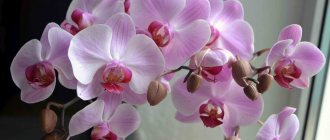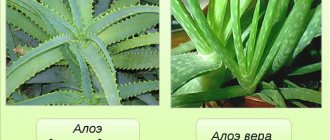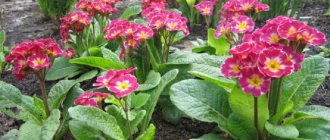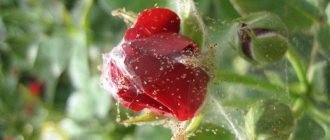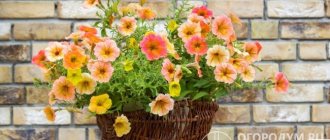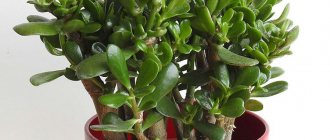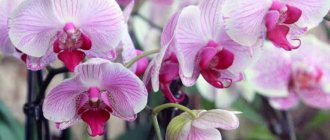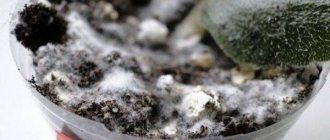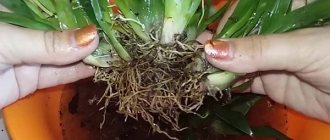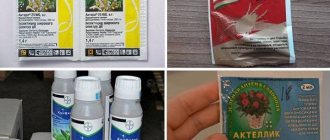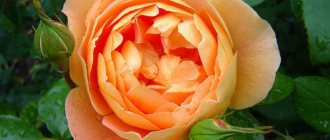Fennel is, unfortunately, a rather rare guest in our gardens. But in Mediterranean cuisine it is a popular vegetable plant. The overgrown base of the rosette leaves is used as a vegetable. In medicine, the fruits are most often used. It is from them that dill water is made, which is used as a carminative (a remedy for bloating) for small children. They are also raw materials for the essential oil industry. Recent studies have shown that fennel essential oil has many beneficial properties. We’ll talk about this many-sided plant, as well as what and how to use it.
Common fennel (Foeniculum vulgare)
Is this the same thing or not?
The upper aerial parts of these fragrant herbs are very similar in appearance. Both types of herbaceous plants belong to the same Apiaceae family and are used in cooking and folk medicine, but they are not the same plant.
Plant similarities
For medicinal purposes, the seeds of dill (Voloshsky) are used; this plant is also called common fennel. The fruits of these medicinal herbs contain essential oils and protein. The aroma of fennel seeds contains subtle notes of anise, unlike its green counterpart.
- Preparations made from fennel and dill seeds are used as a mild expectorant for bronchitis, pneumonia and whooping cough; improve the functioning of the digestive system.
- These herbs are successfully used for treatment in the form of tinctures and decoctions for flatulence and unstable intestinal function in infants.
Why are they confused?
It is possible to confuse plants using only external signs during planting seeds and at a young age ; both species grow well in vegetable gardens and garden plots and upon visual inspection they exhibit similar elements:
- Two types of spices are united by one family - Umbelliferae.
- Their feathery green leaves and numerous inflorescences collected in umbrellas look almost the same.
- Mature stems of both species reach a height of 1-2 m.
- Greens are widely used in cooking in the preparation of meat, fish and vegetable dishes.
Read about planting fennel seeds here.
Dill water, which is sold in pharmacies, is prepared using fennel seeds to normalize intestinal function in children.
Otherwise, these herbs have many differences: the crops have different chemical compositions, so their effect on human organs occurs differently .
How are they different in appearance?
With a closer look at the plants, you can easily notice significant differences:
- The central stem of dill is hollow inside and does not exceed 1.2 m in height. While fennel quickly grows to a height of 2 meters and bushes heavily at the base (dill has a bare stem dotted with individual leaves).
- Fennel is a biennial plant, and dill is an annual plant.
- Clear differences are noticeable when comparing seeds: dill has small, flat seeds, while fennel fruits reach sizes up to 10 mm in length.
- They have completely different aroma and taste properties: dill has a specific taste, unlike other herbs; The taste of fennel is sweet with a slight bitterness. The smell leaves no doubt that these are different plants: dill is a fragrant garden herb, and fennel has an exotic aroma of anise and mint with a hint of tarragon.
When grown in the garden, fennel requires more attention and care than dill.
Despite their superficial similarity, dill and fennel are not the same plants. Two different plants, fennel and dill, have different chemical compositions and have different effects on the body.
Fennel
This spicy herb also has another name - wild dill, sometimes called sweet dill. But fennel is a separate crop from the vegetable umbrella, represented by two varieties.
Note! It is the wild variety (also called pharmaceutical dill) that is most similar to real dill. The vegetable variety is distinguished by a thickened base, popularly called a head.
Similar spices
What does the plant look like?
Fennel has a fairly powerful, branched, waxed, tall (up to 2 m) cylindrical stem with a bluish tinge. Stem leaves, like those of dill, are pinnately dissected into linear narrow lobes. The lower leaves are petiolate; in vegetable fennel, they emerge from the head.
Vegetable fennel
Yellow five-petal flowers are collected in umbrellas, which are located at the tops of the stems. Fennel, like dill, is characterized by bisexuality. The plant blooms from July to September. The two-seeded fruit is similar to dill.
Value
Both varieties of herbs are used for food. Vegetable heads of cabbage are used in salads and for preparing first and second courses. They are also valued as a dietary product. Ordinary fennel is used as a spice instead of dill.
Each type is valuable for its therapeutic effect:
- spicy vegetable heads are recommended for kidney and liver diseases;
- they will also help with eye problems;
- in folk medicine, fennel seeds are included in recipes for hypertension and for the treatment of hypochromic anemia;
- advised to a nursing mother to enhance lactation and in cases where the newborn suffers from colic;
- sweet dill is included in herbal preparations that have carminative and choleretic effects;
- the decoction enhances the secretory function of the digestive glands;
- the seeds have a calming effect on the nervous system.
Healing fruits
The plant is a good antispasmodic and also an antiemetic. The essential aroma is used as a fragrance for medicines. Fennel has also found its use in perfumery and cosmetology.
Compound
All parts of the herb are valued, but it is the fruits that have the most medicinal properties. They are characterized by a high content of essential oils, the main of which is anethole. There are a lot of sugars in the composition, which is why fennel is sweeter than dill. In terms of fatty oil content, both crops under consideration are similar to each other. As well as for the main amount of useful mineral compounds, vitamins, flavonoids, folic acid.
Photo
In the photo below you can see what dill looks like:
And this is fennel:
Benefit
The benefit of plants is that they are accepted by official medicine as medicinal herbs and are widely used to treat many diseases.
Fennel
Fennel fruits are mainly used for medicinal purposes.:
- Due to the high concentration of essential oils (up to 6%), its seeds are used in the perfume industry, in the production of mouth fresheners and in toothpastes.
- The amino acid helps in the treatment of anemia, since iron is an integral part of the hemoglobin molecule in the blood.
- For various disorders of the digestive system: bloating, diarrhea, constipation.
- You can combat bad breath by chewing fennel seeds.
- The use of medicinal herbs is useful for menstrual irregularities in women.
- Diuretic properties help remove toxins from the body.
We invite you to watch a video about the beneficial properties of fennel:
Read about the benefits and harms of fennel here.
Dill
Dill has been known to mankind since ancient times. In Ancient Rome, fragrant branches were inserted into wedding bouquets for girls. These days, dill is known as a popular gastronomic seasoning and a powerful source of vitamins. Dill seeds contain microelements :
- potassium;
- calcium;
- manganese;
- copper;
- zinc.
The calcium content in dill significantly exceeds its amount in peas and beans. Green leaves contain a lot of phosphorus and iron, which makes this plant beneficial for digestion and the cardiovascular system.
The special aroma of dill is given by the essential oil component D-carvone, which prevents the occurrence and slows down the development of cancer cells.
We invite you to watch a video about the benefits of dill:
What is more healing?
Dill and fennel, each in its own way, bring many benefits to the human body. It is difficult to say unequivocally which medicinal herb is healthier . Both plants must be included in the diet.
Dill
Fennel - what is it and how to grow it
This spice is a “classic” of garden beds and has been used by mankind since ancient times. It’s hard to imagine both a summer cottage and a dining table without dill. This plant is more popular than fennel, but is in many ways similar to it.
Description
Externally, dill is very similar to its wildly growing “brother”. The same tall, branched, erect stem with longitudinal ribbed stripes and a waxy coating. At first glance, the leaves are also similar - sessile or petiolate, divided into lobules. If you don’t look too closely at the flowers, they are also identical – small, five-parted, forming umbrellas. It is difficult to distinguish between each other and the seeds are greyish-brown in color.
Dill in the garden
Beneficial features
Basically, garden seasoning is used as a spice for pickling, preserving and pickling vegetables. Essential aroma and taste improve the quality of salads and hot dishes. But dill is valued no less than fennel for its healing properties - they have an almost identical beneficial composition.
Among the essential oils of dill, carvone should be highlighted. Fatty oils are represented by glycerides of linoleic, oleic, petroselinic, and palmitic acids. The spicy culture is attracted by its rich vitamin and mineral set.
The fruits are used to make dill water for babies; it helps improve intestinal motility. Decoctions and infusions have a calming and antispasmodic effect, expectorant and vasodilator, diuretic and choleretic.
For colic in the tummy
Dyspepsia in children is treated with dill decoctions. The composition of dill waters is useful for cystitis in adults, relieves flatulence and abdominal pain. Every property inherent in fennel can be attributed to garden dill.
Harm and contraindications
Any healthy product must be consumed in reasonable quantities.
At fennel
With excessive consumption of this culture, the components included in the essential oils can cause:
- neurotic changes;
- rapid breathing is observed;
- heartbeat increases.
It is necessary to take the herb for medicinal purposes in small doses , gradually increasing them. If you experience negative changes in your health: nausea, dizziness or diarrhea, you should immediately stop using the medicine and seek advice from your doctor.
At dill
It is not recommended to consume dill in large quantities if you have nervous system disorders. The components included in its composition can cause addiction to the body, which leads to the need to increase the dose of their consumption:
For example, carotene affects visual acuity; with uncontrolled consumption of spicy greens, the body begins to need a constant increase in the dose of carotene, otherwise visual acuity will begin to decrease.- Dill has diuretic properties, so people with kidney disease should use this green with caution; especially if other diuretics are taken - this can lead to dehydration.
- The herb stimulates the functioning of the stomach and intestines; as a result of addiction without the use of a green stimulant, malfunctions in the digestive system may occur.
Hurry to the garden
Growing this plant is not difficult. Fennel is a relatively heat-loving and light-loving plant. In open ground, biennial forms overwinter well only in the southern zone.
Fennel is a drought-resistant plant, but during the period from sowing to the formation of a rosette it requires increased soil moisture. The minimum temperature for seed germination is +6+8°C. In moist soil at a temperature of +15+16°C they germinate on the fifth day. Fennel noticeably suffers from early spring frosts. During the ripening period it requires dry, sunny and hot weather.
Fennel is very sensitive to soil conditions. High yields can be obtained only on highly fertile, humus, chernozem soils, on a high agricultural background with the use of increased doses of fertilizers. It is not recommended to apply organic fertilizers to fennel on fertile soils, as they increase the vegetative mass, while reducing the fruit yield and the yield of essential oil. But on poor soddy-podzolic soils, this rule can be safely broken and rotted compost can be added not only for nutrition, but also to improve the soil structure. On fertile soils, it is better to apply organic fertilizers under the fennel predecessor.
But the most important for fennel are phosphorus fertilizers. They contribute to the formation of a large number of large and fragrant seeds. Therefore, apply phosphorus (superphosphate) when preparing the site for fennel and add a little extra superphosphate a couple of times during the summer with abundant watering.
In early spring, seeds are sown in rows in a sunny area. The distance between the rows is 50-60 cm, the seeding depth is 1.5-2 cm. To speed up the emergence of seedlings, at home the seeds can be soaked in water for a day, changing it periodically. A very good effect is obtained by soaking in growth stimulants, which are now widely represented on our market, and then washing the seeds several times in water. After this, the seeds should be slightly dried to a loose state and can be sown. The emerging shoots are very reminiscent of dill, only larger.
Care is the simplest - weeding, loosening, and in case of drought, watering is necessary (then the greens will be tender for a long time), because you can use not only the fruits.
Greens are collected as needed all summer, but seeds will most likely only be obtained next year. If we are talking about the Non-Chernozem Zone, then its cultivation here can only be of an amateur nature, since it does not overwinter and bear fruit every year.
I would like to immediately warn you that when grown in our northern conditions in some winters, this plant cannot withstand winter cold, and as a result, you may not get a seed harvest in some years. What to do, as pundits say, “the zone of risky farming.” Therefore, it is better to sow plants every year and leave an emergency supply of seeds so as not to be left without seed. But remember that it is better not to store seeds for more than 2 years, so the “stash” needs to be constantly updated.
In order to improve seed set, you can treat the plants during the budding phase with a weak solution of boric acid purchased at the pharmacy. Experienced gardeners successfully use this technique on tomatoes.
As with other umbelliferous ether bearers, flowering and seed ripening in umbels of different orders is extremely uneven. The flowers appear first, the fruits set and ripen on the central umbels, and then alternately on the umbels of the first, second and third orders. Ripe fruits crumble very much, so fennel is harvested separately. Plants are cut when the fruits of the central umbels and umbels of the first order reach a yellowish-brown color, which corresponds to the waxy ripeness of the seeds. At this time, umbrellas in general acquire a grayish-ashy tint.
They are laid out in a loose layer in a well-ventilated area, dried, and then threshed and sifted, separating the chaff.
The medicinal raw materials of fennel are, as already mentioned, the fruits. Medieval herbalists believed that they should be collected on the waxing moon, then they would have greater power. Now, of course, no one adheres to this rule, but the quality requirements are expressed in the content of active ingredients. The finished raw material must contain at least 3% essential oil, no more than 14% moisture, no more than 1% damaged and underdeveloped fruits, no more than 1% essential oil impurity. In pharmacies they are stored in well-closed jars or tins, in warehouses - in bags.
What is the difference between what is common and which spice is healthier?
The differences between these aromatic herbs are determined by their chemical composition, medical indications for use, and they smell differently. Due to differences in composition, plants have different effects on organs . Fennel's crunchy, aromatic rhizome is eaten, but dill's roots are not suitable for anything.
Dill and fennel are united by the use of both herbs in cooking and the young plants are very similar in appearance.
By all indicators, fennel contains more medicinal and nutrients than dill. Therefore, you can easily replace dill with fennel, both in medicine and in cooking (the taste and smell of the dish will only improve), but fennel cannot be replaced with dill: the replacement will not bring the desired result. If you have the opportunity to choose, then fennel will be much healthier than dill.
What is the difference between dill and fennel?
The two spice cultures are very similar. But in order to fully understand the question: is fennel a type of dill or not, it is worth considering the differences between them (and they exist).
Differences between cultures
| Fennel | Dill |
| Develops as a perennial plant, can grow in one place for up to 4 years | herbaceous annual |
| Fennel grows larger in height than dill | |
| The leaf lobes are wider than those of true dill and coarser | Graceful leaves are dissected into narrow, almost needle-like lobes |
| Umbrellas are formed mainly at the tops of stems | Umbrella inflorescences are also present on the branches |
| The strong smell is closer to anise than dill. | Native rich spicy aroma |
| Larger fruit | The seed is smaller than fennel |
| Essential oils in seeds not less than 6% | Less pronounced fruit aroma due to lower ester content - up to 4% |
| Presence of edible heads at the base of the vegetable fennel | The stem does not have characteristic thickenings |
| Powerful, spindle-shaped root, up to 2 cm thick | The rod is thin and poorly developed |
| There are minor differences in chemical composition |
Dill Alligator
Crops and agricultural technology differ. In many ways, the growing conditions are identical, but a number of differences can be identified.
Distinctive features of agricultural technology
| Fennel | Dill |
| Already growing on the site and ready to produce greens throughout the growing season | To have fresh greens all season, it will have to be sown every year at several times. |
| Sow when spring frosts have gone | You can sow as soon as the snow melts |
| Each plant needs a lot of space - up to 20 cm after thinning, due to the powerful heads of cabbage, so it needs separate beds | When growing, leave no more than 3 cm between plants. Can be planted between other crops |
| Requires constant care | Unpretentious plant |
| When the stems of the vegetable species begin to thicken, the plant must be hilled | Does not require hilling |
| The harvest is harvested when the heads of cabbage ripen (when they become the size of an apple). These thickenings are cut off at the root | Green twigs are used for food, umbrellas are used for canning and for spices after flowering |
| In the southern regions, it requires covering with mulch for the winter - leaving 5-6 cm of the stem above the ground. In the northern regions, it is recommended to dig it up with a ball of earth and keep it in a greenhouse until spring. | As an annual, it does not need such an event. At the end of the growing season, it is simply removed from the site. |
Knowing all these features, it will now be easy to distinguish fennel from dill. But when preparing a pharmaceutical plant, it is advisable not to confuse it with other wild plants.
Important! There are many similar umbrellas in nature, but most often fennel is confused with hogweed, which, although it has beneficial properties, is quite poisonous.
From a distance, the flowering plant really looks like sweet dill - the same yellow umbrella-baskets. But, taking a closer look, they notice that the inflorescences are flatter and have an irregular shape, and the leaves of the hogweed are solid and wider. The bush itself reaches a considerable size, the stem is stiff and heavily pubescent.
The plant is not just poisonous - contact with it causes severe burns on the body. To avoid such a nuisance, you need to know hogweed by sight. Therefore, it is worth carefully studying the photo of this umbrella plant so as not to confuse pharmaceutical fennel with it.
Poison Umbrella
Considering how one representative of the Celery family can differ from another, you understand how diverse the natural world is (even with the maximum external similarity). Dill and fennel are similar not only in their appearance, but also in their beneficial properties. Although here there are distinctive nuances determined by the chemical composition of each plant.
Important! If replacing one dill with another does not significantly affect the recipe, then confusing fennel with hogweed is a dangerous option that will lead to serious negative consequences.
0 0 votes
Article rating
Is it possible to replace one plant with another?
One important feature should be noted: in all respects, fennel contains more medicinal and nutrients than dill.
Therefore, you can easily replace dill with fennel, both in medicine and in cooking (the taste and smell of the dish will only improve).
Fennel cannot be replaced with dill; scientists have noted that the replacement will not bring the desired result. If you have the opportunity to choose, then fennel will be much healthier than dill.
How will the taste of the dish change?
These plants have different tastes and aroma. Fennel has a minty-anise flavor with a slight bitterness. Dill has a rich aroma and sweet-spicy notes.
The use of fennel and dill in cooking
Fennel is eaten in its entirety, from the fleshy bulbs to the aromatic seeds. In contrast, only young stems with leaves and dry seeds are collected for food from garden dill.
Dill is added for flavor to soups, salads, and side dishes. It is used to season fish, meat, vegetables and sauces.
The seeds of fragrant dill give rye bread a spicy, tart aroma. When canning vegetables, dry umbrellas with seeds are added to the brine.
The fleshy base of fennel stems is used in cooking as a separate product. The stems are stewed, fried and pickled like other vegetables.
Dried fennel leaves and seeds are an aromatic seasoning for fish, meat, vegetables and desserts. In Italy, Greece and other Mediterranean countries you can find fennel ice cream and chocolate with fennel seeds instead of nuts.
For bakers, fennel seeds are a seasoning for white bread. The minty-anise scent of fennel essential oil is used to impart a refined aroma to coffee, tea and cocoa.
Fennel is useful in making marinades and sauces for fish and meat. In Italy and India, it is customary to preserve and pickle fleshy onions and dill leaves. Fruits with an anise aroma are added to homemade sour berry jam.
Is it possible to mix?
Dill and fennel go well together . When canning, the mixture of flavors will add flavor to the vegetables. The taste of a fresh vegetable salad will only benefit from adding both herbs. To enhance lactation, doctors recommend taking infusions from various herbs for nursing mothers.
If you are taking a medicinal mixture to increase your breast milk supply, the benefits of fennel seed and dill mixture will increase.
Dill and fennel are sources of vitamins and microelements necessary for humans. If these plants are consumed correctly, they will not cause any harm to the body.
